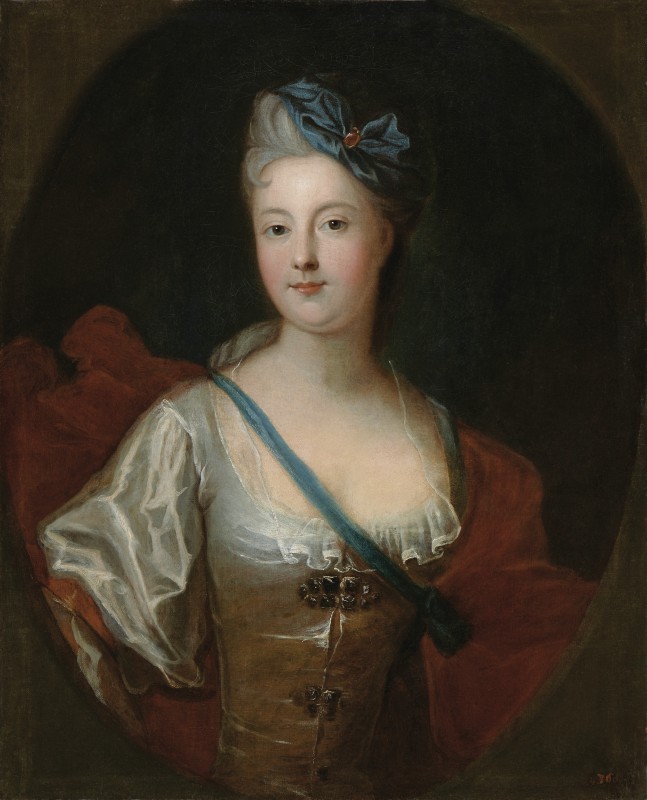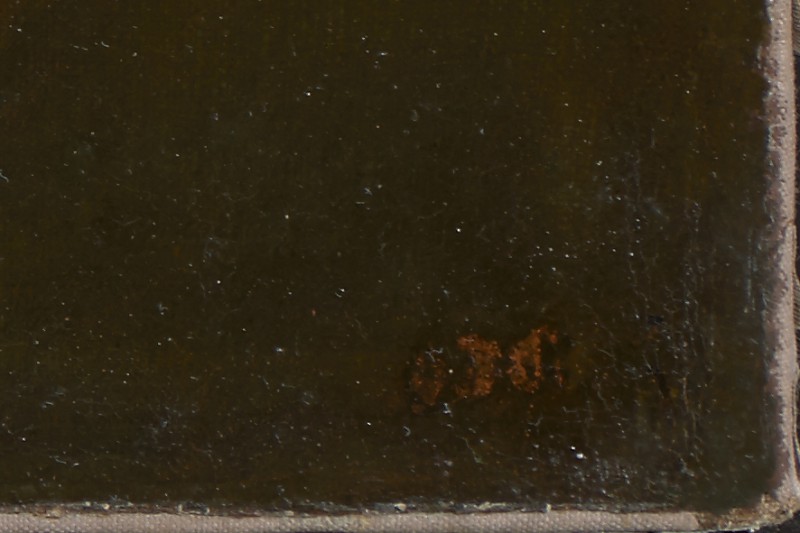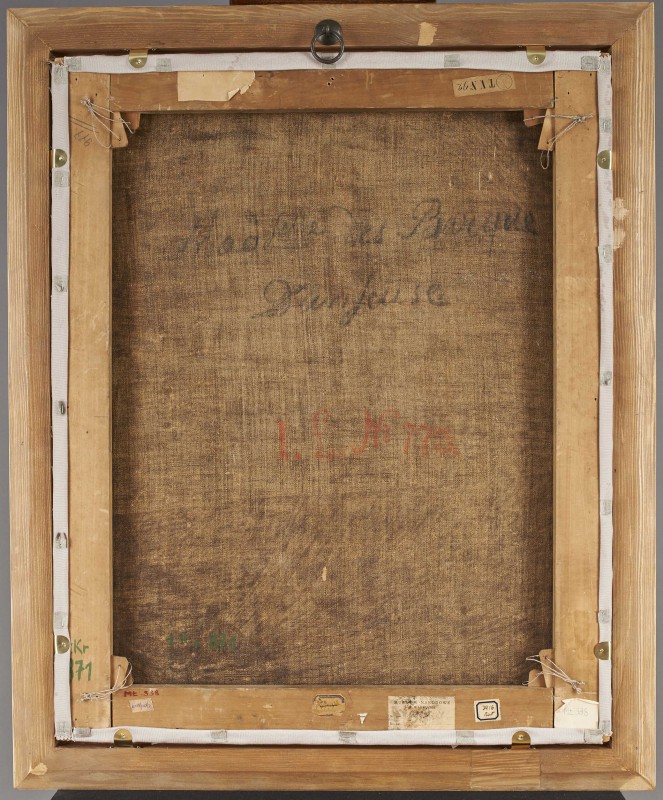Portrait of a Lady (‘Angélique Duparc’)
- Date
- c. 1718-1720
- Object type
- painting
- Technique
- oil, roulette
- Material
- canvas
- Dimensions
- 78,5 x 63,7 cm
- Acquisition date
- 1764
- Location
- The Palace on the Isle - Bacchus Room, ground floor
- Marks and inscriptions
- red number 976 of the Stanisław August collection, bottom right (barely legible)
- Place of Origin
- Warsaw (Poland, Mazowieckie)
- Owner
- The Royal Łazienki
- Museum number
- ŁKr 871
The painting belongs to a group of 15 portraits (see cat. nos. 67–71, 84–85, 95, 125–28 and 134–36) which are traditionally believed to have been acquired by Stanisław August in 1764 from Kasper Lubomirski, together with the Ujazdów estate ... . The list of paintings bought by the King, together with Ujazdów Castle, dated from 1765 ... does not give the dimensions nor the authors of the paintings. ...
The present portrait was described in the 1793 catalogue of the Stanisław August collection as showing Angélique Duparc (Debargues, de Bargues, Desbargues, du Parc), a dancer from Brussels, from 1709 mistress to August II, the wife of the dancing master and choreographer, Charles Duparc (d. 1721), with whom she appeared in Dresden in 1709–14 and 1715, and also in Warsaw in the 1720–21 season. ...
In the 1783, 1793, 1793–95 and 1795 catalogues of the Stanisław August collection, the painting is recorded as being an anonymous work; in the 1784–92 catalogue the entry can be interpreted (although rather ambiguously) as indicating it could be by Ádám Mányoki. ... Stanisław Iskierski (S. Iskierski, Katalog galerii obrazów Pałacu w Łazienkach w Warszawie, Warszawa 1931, no. 85) and Béla Lázár (B. Lázár, Mányoki Ádám élete és müvészete, Budapest 1933, p. 28, 131, plate XIXb) believed it to be the work of Ádám Mányoki ... . Enikő Buzási (E. Buzási, Ádám Mányoki (1673–1757). Monographie und Oeuvrekatalog, Budapest 2003, no. C. 345) rejected this attribution, pointing to the compositional analogies and the model’s physical similarity to a portrait by Pierre Gobert, in the Staatsgemäldegalerie in Dresden, identified by her as a likeness of Elisabeth Charlotte d’Orléans, and by the authors of the Dresden catalogue of paintings as a portrait of an unknown lady ... (cf. portraits of Elisabeth Charlotte in the Louvre, showing a dark-haired woman).
The Łazienki painting is a slightly altered copy of the Dresden original: the pose, face, coiffure and its decoration are reproduced exactly, whereas the cut of the dress and manner of pinning the mantle differ. The history of the Dresden original makes the sitter’s identity—as given by Stanislavian sources and Polish literature—questionable. Gobert’s painting was sent from Paris to the Dresden collection in 1707, and King August II did not meet Duparc—the famous dancer from Brussels and his future mistress–until two years later. Therefore, neither the Dresden painting nor its copy in Warsaw could be a likeness of Duparc. [See D. Juszczak, H. Małachowicz, The Stanisław August Collection of Paintings at the Royal Łazienki. Catalogue, Royal Łazienki Museum, Warsaw 2016, no. 48, pp. 194–196.]





